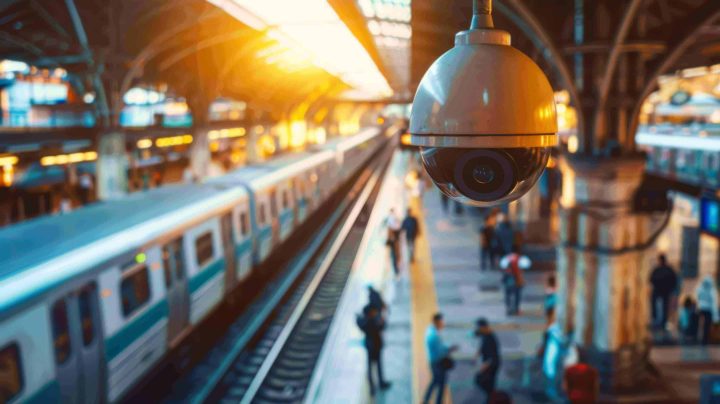Rail stations are much more than mere departure and arrival points for travelers. They are evolving into vibrant hubs of activity, welcoming a multitude of passengers daily and posing complex logistical flow management challenges. To address these challenges, artificial intelligence (AI) comes into play, transforming these stations into intelligent passenger flow management centers.
AI at the heart of rail transport for efficient passenger flow management
Enhanced security through
Smart stations incorporate advanced security systems powered by AI to ensure the safety of passengers and staff. Cameras equipped with facial and behavioral recognition technologies analyze movements in real-time within the station, identifying suspicious behaviors and preventing incidents before they occur. This intelligent surveillance ensures a safe and secure environment for all station users.
In addition to facial recognition, security systems may also include sensors detecting abandoned or suspicious objects, temperature scanners for contagious disease detection, and alert systems for emergency situations such as fires or intrusions.
Dynamic passenger flow management
Thanks to AI, stations are now capable of efficiently managing passenger flows, even during peak periods. Sophisticated algorithms analyze real-time data, enabling station operators to adjust train schedules and forecast crowd levels. This proactive management of passenger flows reduces waiting times, minimizes congestion, and overall enhances the efficiency of the railway network.

Furthermore, technologies such as people flow sensors and video surveillance systems can provide valuable insights into passenger movement patterns, allowing station authorities to optimize the layout of spaces and services for a smoother experience.
Personalized passenger experience
Smart stations offer a personalized travel experience through AI. Mobile applications equipped with machine learning algorithms provide passengers with real-time information on train schedules, recommended routes, and available services. Moreover, these applications can anticipate individual passenger needs, offering personalized recommendations on travel options and special offers.
Some stations also use AI-powered virtual assistants to answer passenger questions, provide directions, and even perform real-time translations for international travelers.
Environmental sustainability
Smart stations integrate sustainable solutions powered by AI to reduce their environmental footprint. Smart sensors monitor energy consumption and automatically adjust lighting and air conditioning based on needs. Additionally, waste management systems use algorithms to optimize sorting and recycling, thus contributing to environmental preservation and promoting more sustainable urban mobility.
Some smart station projects also incorporate solar panels and energy recovery systems to reduce their reliance on traditional energy sources and decrease carbon emissions associated with their operation.
For more information, click here
